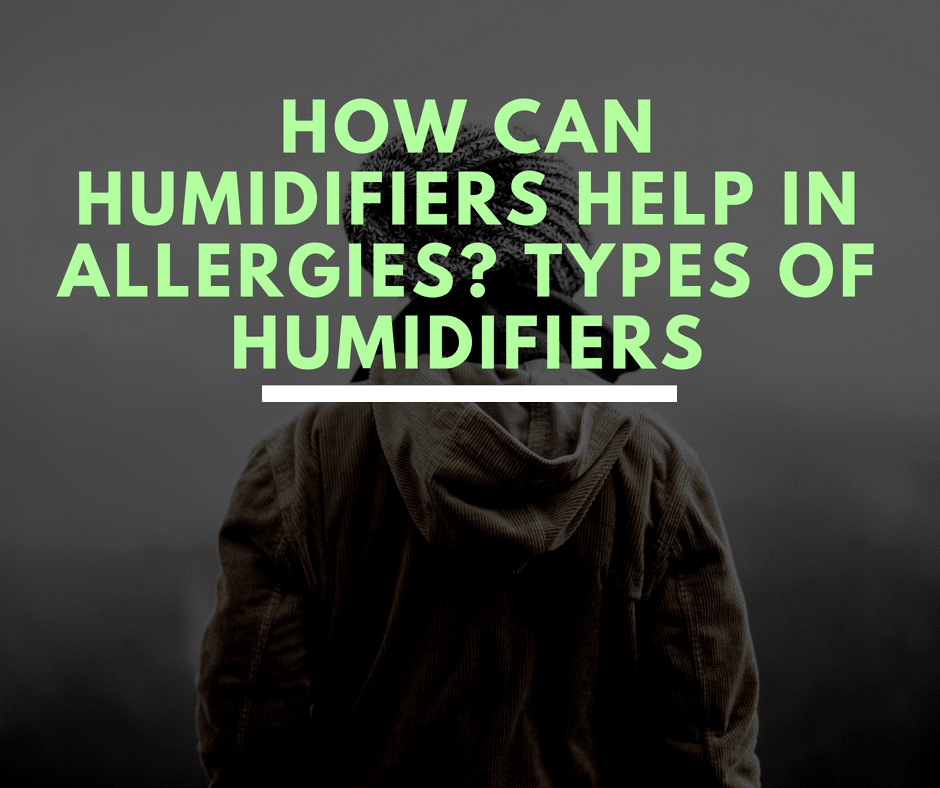How Humidifiers Help in Allergies | Types of Humidifiers

In this article, we will be looking at How Humidifiers Help in Allergies and also telling you about the various types of humidifiers.
A Humidifier is used to diffuse water in the form of mist to increase the relative humidity levels in the atmosphere. A humidifier works on the technology of using water from its tank which is either absorbed by a wick filter or boiled by using an internal heating element to create a cool or warm mist that is released into the surroundings during its operation.
One of the major advantages of using Humidifiers is the relief it provides to people suffering from allergic reactions from allergens like pollens, cloth fiber, bacteria, viruses, etc. These allergens become lighter in dry air and therefore scatter very easily in the atmosphere leading to Allergies and infections. Dry air is also responsible for making your throat all rough and scratchy leading to sore throat and your nasal passage all dried up leading to respiratory issues. It can also absorb the natural moisture of your skin and lead to rashes, itching and skin infections.
To avoid falling prey to the effects of Dry air and aid you with your Allergies, you should humidify your surroundings by using Humidifiers.
You might ask, “How does a humidifier help?” Well, the basic operation of a humidifier is to increase the moisture in the environment and regulate it to keep within the ideal range of 30% to 50%. This relative humidity in the air can then make the allergens heavier eventually making them settle and restricting their easy flow in the room atmosphere.
The relative humidity can also help in preserving your skin and body’s natural moisture contributing to a younger looking skin, free of rashes and skin infections. It can also help in clearing the obstructions in your nasal passage hence avoiding the chances of sinus infections.
There are various types of Humidifiers available in the market based on factors like size, operation, mist type, etc. Following are the 3 broad categories:
1. Cool Mist Humidifiers : These humidifiers can range from Evaporative, Ultrasonic and Impeller. Evaporative Humidifier uses a wick filter, water tank and fan to disperse a mist at room temperature in the atmosphere.
Ultrasonic Humidifier uses a vibrating nebulizer to disperse the water and Impeller Humidifier uses a rotating disk to produce mist and then diffuse it in the surroundings. These humidifiers hold the disadvantage of being noisier than the Warm mist humidifiers.
2. Warm Mist Humidifiers : These humidifiers use electricity to boil the water and create steam to be diffused into the atmosphere. They have an added advantage of dispersing bacteria-free mist because of the boiling process. The disadvantage that these humidifiers hold is the risk of burning when in direct contact with the just-sprayed warm mist and the high consumption of electricity during its operation.
3. Warm and Cool Mist Humidifiers : These are the combination of both Cool and Warm mist humidifiers and can be utilized in any setting as required.
To be able to choose the best humidifier for allergies from the above stated humidifier types, you should ensure that the humidifier is compatible with medical vapors, has high quality filters, does not diffuse white dust and is easy to clean and maintain.
Author Bio:
William is an enthusiastic blogger with around 10 years of Blogging experience. He set up the website Make Home Healthy to assist his readers with cleaning related issues and suggest them effective approaches to keep their home clean and tidy.
